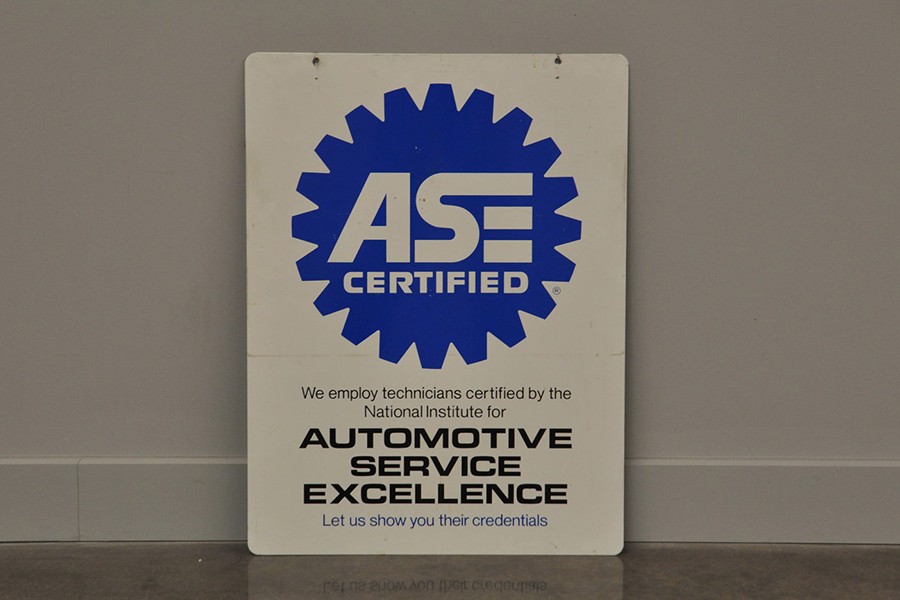Navigating car repairs can feel like stepping into the unknown, especially if you’re not a car enthusiast. The stereotype of the dishonest mechanic preying on the less knowledgeable car owner is persistent for a reason. Worries about unnecessary repairs, inflated costs, and extended downtimes are common. You might wonder: Are mechanics truly that bad? How can you discern if you’re being taken advantage of? And crucially, what steps can you take if you suspect foul play? To shed light on these concerns, we’ve consulted with John Ibbotson, the chief mechanic at Consumer Reports, a renowned authority in product testing, to get some straightforward, honest answers and help you learn how to not get screwed over with car repair.
Are Mechanics Really That Dishonest?
It’s easy to paint all mechanics with the same brush, but according to Ibbotson, the reality is more nuanced. “Generally, most garages and repair shops operate with honesty,” he states. However, he distinguishes between outright dishonesty and “upselling.” Upselling isn’t necessarily about being deceitful, but rather suggesting services or replacements that could benefit your vehicle, while conveniently boosting the shop’s revenue. Think about those frequent recommendations for power steering, transmission, or brake fluid flushes. While these services might offer some benefit, they might not be immediately necessary or as urgent as presented. Similarly, a mechanic might advise immediate brake pad replacement when you could still safely drive for a few more months.
Red Flags: Recognizing Dishonesty
So, how do you identify genuine dishonesty? Ibbotson points to scare tactics as a significant warning sign, especially when coupled with a lengthy repair list and a hefty bill. Be wary if a mechanic uses alarming language – claiming your car is unsafe to drive home, barely running, or you’re “lucky to be alive.” Such dramatic pronouncements should raise suspicion, particularly if you are diligent about regular car maintenance.
However, it’s crucial to consider your own car maintenance habits. Ibbotson cautions, “If you haven’t serviced your car in years, it probably is dangerous to drive!” Neglecting routine maintenance means problems are more likely to accumulate and become severe. “I’ve seen cases where people ignore car care, then are shocked when 18 things are broken and the repair bill is high. It’s not always a scam; sometimes it’s just neglect catching up,” he explains.
Decoding Mechanic Recommendations: Fluids, Belts, and Filters
When a mechanic recommends replacing fluids, belts, or filters, how can you determine if it’s genuinely needed or just an upsell? Ibbotson’s advice is simple and empowering: consult your owner’s manual. “Your owner’s manual is your best friend,” he emphasizes. It contains a dedicated section detailing the recommended intervals for inspecting and replacing various components and fluids. This manual serves as an unbiased guide, removing the guesswork and reliance solely on the mechanic’s word.
Interestingly, these maintenance schedules can vary significantly between car manufacturers. Ibbotson provides an example: “Subaru often recommends brake fluid flushes every 30,000 miles, while many General Motors vehicles may not even list brake fluid flushes as a regular maintenance item.” Therefore, relying on generic advice or assumptions can be misleading.
While your owner’s manual provides a solid baseline, environmental factors can also influence maintenance needs. For instance, Ibbotson notes that in high-humidity climates, more frequent brake fluid flushes might be beneficial, even for cars with less stringent factory recommendations, especially if you are meticulous about car care. However, these climate-related adjustments are usually minor deviations from the manufacturer’s guidelines.
Taking Control: Steps to Protect Yourself
If you feel uneasy about a diagnosis or repair estimate, you have several proactive options. If you have some mechanical aptitude, Ibbotson suggests asking the mechanic to physically show you the problematic part, leak, or damage. “Make them demonstrate the issue,” he advises. A direct question like, “Can you show me exactly why this needs replacing?” puts the onus on the mechanic to provide tangible evidence.
Another highly effective tactic is to seek a second opinion. “Getting a second opinion is the most straightforward way to verify a diagnosis,” Ibbotson states. Take your car to another reputable garage and compare their assessment. This not only validates the initial diagnosis but can also reveal differences in labor costs or parts markups, potentially saving you money.
Harness the power of online resources as well. Ibbotson recommends using search engines to research if the suggested repair is a common issue for your specific car make and model. Online forums and car communities often discuss common problems and typical repair costs, giving you valuable insights and benchmarks to assess the fairness of the quote you received.
Finding a Trustworthy Mechanic: Building a Reliable Relationship
Finding a reputable car repair shop is crucial to prevent being overcharged or receiving unnecessary services. Ibbotson highlights several strategies for locating trustworthy mechanics. “Word-of-mouth referrals are invaluable,” he says. Ask friends, family, neighbors, and colleagues for recommendations. Personal experiences often provide the most reliable insights.
The internet is also a powerful tool for research. Community-based platforms like Nextdoor or local Facebook groups can be excellent sources for local mechanic recommendations. People are often vocal about their positive and negative experiences, offering a collective wisdom of local service providers.
Ibbotson also points to the ASE (Automotive Service Excellence) certification as a positive indicator. “An ASE certification sticker in a shop window signals a commitment to competence,” he explains. ASE certification requires mechanics to undergo regular training and testing, ensuring they stay updated with current automotive technologies and repair techniques. Look for this certification as a baseline indicator of professionalism.
 ASE certification sticker in a shop window is a good sign of mechanic competence
ASE certification sticker in a shop window is a good sign of mechanic competence
Ultimately, Ibbotson observes that in most communities, a few auto repair shops gain a strong reputation and become the go-to places. Identifying these popular, well-regarded shops is often a good bet. Additionally, consider specialized shops. If you drive a BMW, Subaru, or another specific make, a shop specializing in that brand might offer deeper expertise and more tailored service.
Building Trust: The Key to a Good Mechanic Relationship
Once you’ve identified a potential garage, Ibbotson emphasizes that trust is the cornerstone of a positive mechanic-customer relationship. “Trust is paramount,” he asserts. Start by using a new shop for minor services, like an oil change or tire rotation. “This initial interaction allows you to gauge their service quality, pricing, and communication style,” Ibbotson explains. Pay attention to whether they provide a clear explanation of the work done, a transparent bill, and if their recommendations align with your car’s maintenance schedule and your own knowledge of your vehicle. Be wary if a shop immediately recommends a long list of repairs when you bring your car in for a simple service and you are known to maintain your car well.
Building a long-term relationship with a garage can be beneficial. If you become a regular customer, mechanics are more likely to be proactive in advising you about upcoming maintenance needs, like worn brake pads that will need replacing in a few months. Conversely, if a shop perceives you as someone who frequently shops around and only comes in for urgent repairs, they might be more inclined to maximize profits during each visit. As Ibbotson humorously puts it, they might suddenly discover a cracked engine block or a failing axle.
By being informed, proactive, and building trust, you can navigate car repairs with confidence and avoid the dreaded scenario of getting ripped off by your mechanic.
[

